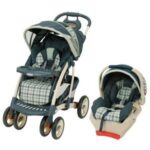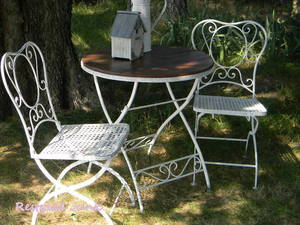Bowed legs. Many well wishers and good intentioned bystanders have given many mothers feelings of guilt over this one topic.
So your three month old or four month old likes to practice standing. They do it when you pick them up, when you try to put them do, by bracing legs against the car seat of high chair…. They can’t stand for long, only a few seconds at first, but the big grins and toothless smiles attest to their enjoyment at standing.
But will such antics cause their legs to bow?
According to www.pediatric-orthopedics.com, the answer is no. Even Dr. Spock is quick to point out the reason for bowlegs.
Babies are born with their legs bowed. It’s a result of nine months of increasingly cramping conditions. Their little legs get folded up, and knees wide apart to make room for their head. After months of this condition, they’re introduced into the world and then spend the next year or so with a wad of diaper bunched up between their legs.
Most babies and toddlers have bow legs with their toys pointed outward for balance. This is all normal.
Only as they learn to walk will their little legs straighten. As the muscles develop and get used to bearing the youngsters weight, the knees will get closer together, usually between 18 months and 3 years of age.
But if that’s not enough, at that point, their wobbly knees start to face inward, making them knock-kneed. Any mother can easily go from one panic to another. But again, the knock-kneed stage is normal. Usually at this point, the feet are beginning to rotate to parallel as well.
At about 5 to 6 years of age, the legs will straighten and feet will come as close to parallel as they will be for the child’s life.
Certain factors do influence this approximate leg straightening schedule. An early walker will tend to straighten earlier than a late walker. Also, a heavier child will tend to have a greater “bow” in their legs than a thinner one.
Most doctors allow nature to take its course. While usually this is the best thing to do, there are two common diseases that parents should be aware of.
The first is rickets. Rickets is commonly thought as a Vitamin D deficiency. While basically true, rickets has several forms, one of which is a genetic inability to process Vitamin D. The nutrition or diet of the child is not at fault (and hence not the parent). If this condition runs in either of the parent’s family, it may be wise to have your physician aware of this and to keep an eye out on the development.
The second disease is called Blounts disease. In this case, it’s the growth plates of the bones involved. Symptoms include extreme bowlegedness. Early diagnosis and treatment can minimize any major bone issues.
Either way, regualr check ups with the pediatrician during the child’s second year of life are highly recommended in order to follow the progress of the leg development, among other important items.
So let your little one stand.




